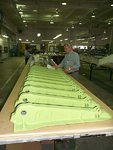parsifal
Colonel
I dont doubt that 3cm fire would make a mess of them. But is that worse, or better than a metal framed aircraft. I have seen photos of the sort of damage a single 3cm can do to a B-17......its not pretty.
I think also that you have to admit that Welters is a bit suspect as a source. He claims 25 kills in his 262, to which the RAF can only confirm the loss of three Mosquitoes in the time specified (or something like that).
I equally dont necessarily accept the non scientific appraisals made by RAF members, that simply describe the type as "rugged" or "tough". It doesnt get to the core of the question in my opinion
I think also that you have to admit that Welters is a bit suspect as a source. He claims 25 kills in his 262, to which the RAF can only confirm the loss of three Mosquitoes in the time specified (or something like that).
I equally dont necessarily accept the non scientific appraisals made by RAF members, that simply describe the type as "rugged" or "tough". It doesnt get to the core of the question in my opinion
Last edited:



